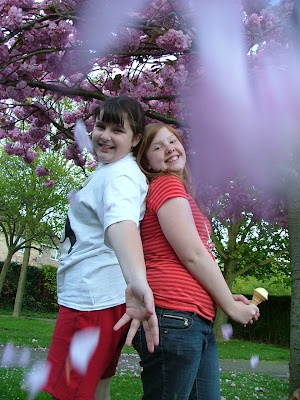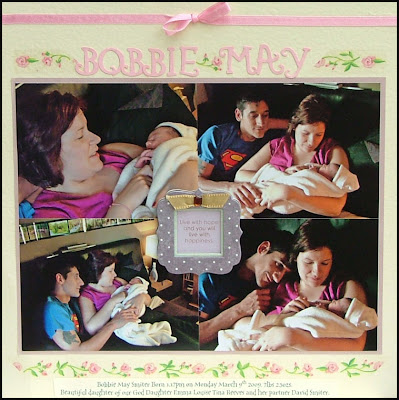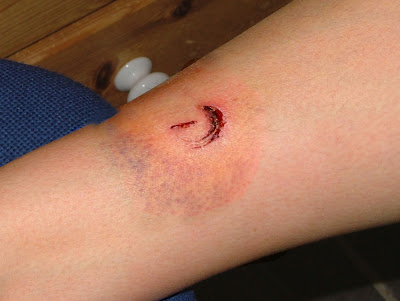

Above is a picture of the Halls of Residence.

The Mansion House Surrounded by beautiful daffodils!
Last week we took a trip to Trent Park, this was to primarily to see how far from home it was and what the journey would be like for Carl if he is lucky enough to get a place at Middlesex University in September. It got me thinking about the place. I was amazed at how beautiful it is. The mansion house is outstanding and its certainly a place that I think I would have enjoyed studying at.
So to the history.....
Trent Park dates back to the fourteenth century when it was part of Enfield Chase, one of Henry IV's hunting grounds. In 1777 George III, leased the site to Sir Richard Jebb his favourite doctor as a reward for saving the life of the King's younger brother, the then Duke of Gloucester. Jebb chose the name Trent, because it was in Trento that the King's brother had been saved.
In about 1836 the house was bought by the banker David Bevan for his son Robert Cooper Lee Bevan on his marriage to Lady Agneta Yorke. Robert Bevan built Christ Church, Trent, in 1838 to provide a suitable place of worship for the district. In 1909 the estate was sold to Philip Sassoon (cousin of the poet Siegfried Sassoon), who entertained many celebrity guests at Trent Park, including Charlie Chaplin and Winston Churchill.One of the Halls of Residence is named Sassoon Hall after the previous owner.
During World War II Trent Park was used as a special prison for captured German generals and staff officers. They were treated reasonably hospitably with special rations of whisky and regular walks in the grounds. Many of the rooms inside the mansion had been equipped with hidden microphones and listening devices, and thus the British military was able to gather important military information and an intimate inside-view into the minds of the German military elite. They received information about war crimes, political views and got a clearer picture of the military resistance that led to the unsuccessful coup on July 20, 1944. 84 Generals and a number of lower ranking staff officers were brought to Trent Park. More than 1,300 protocols were written by the time the war ended; a selection of these was published in English in 2007 under the title Tapping Hitler's Generals.
In 1951 the estate became the then Trent Park College, which became part of Middlesex Polytechnic in 1978, which itself became Middlesex University in 1992. The University's Vice-Chancellor is provided with a residence within the park. Though not so grand as the main house, this does nevertheless boast several small private gardens including a rose garden. Other University buildings including student residences and offices are nearby.
In 1973 Trent Park was opened to the public as a 3.8 km² country park, which surrounds the university campus.
The country park includes publicly accessible countryside, farmland, a golf course and an equestrian centre. Some of the grounds were attractively landscaped by Humphry Repton in the English manner (some also attribute the work of Capability Brown). Features of the original landscaping that can still be seen include an impressive avenue of lime trees, an obelisk, ornamental lakes and a water garden.
The original mansion and a number of statues and other structures located within the grounds (such as the Orangery) are Grade II listed building. The site is designated as Green Belt, and lies within a conservation area and is also included within the Register of Parks and Gardens of Special Historic Interest in England.
All we have to hope for now is that he gets the results that he needs to secure him a place!!




















































